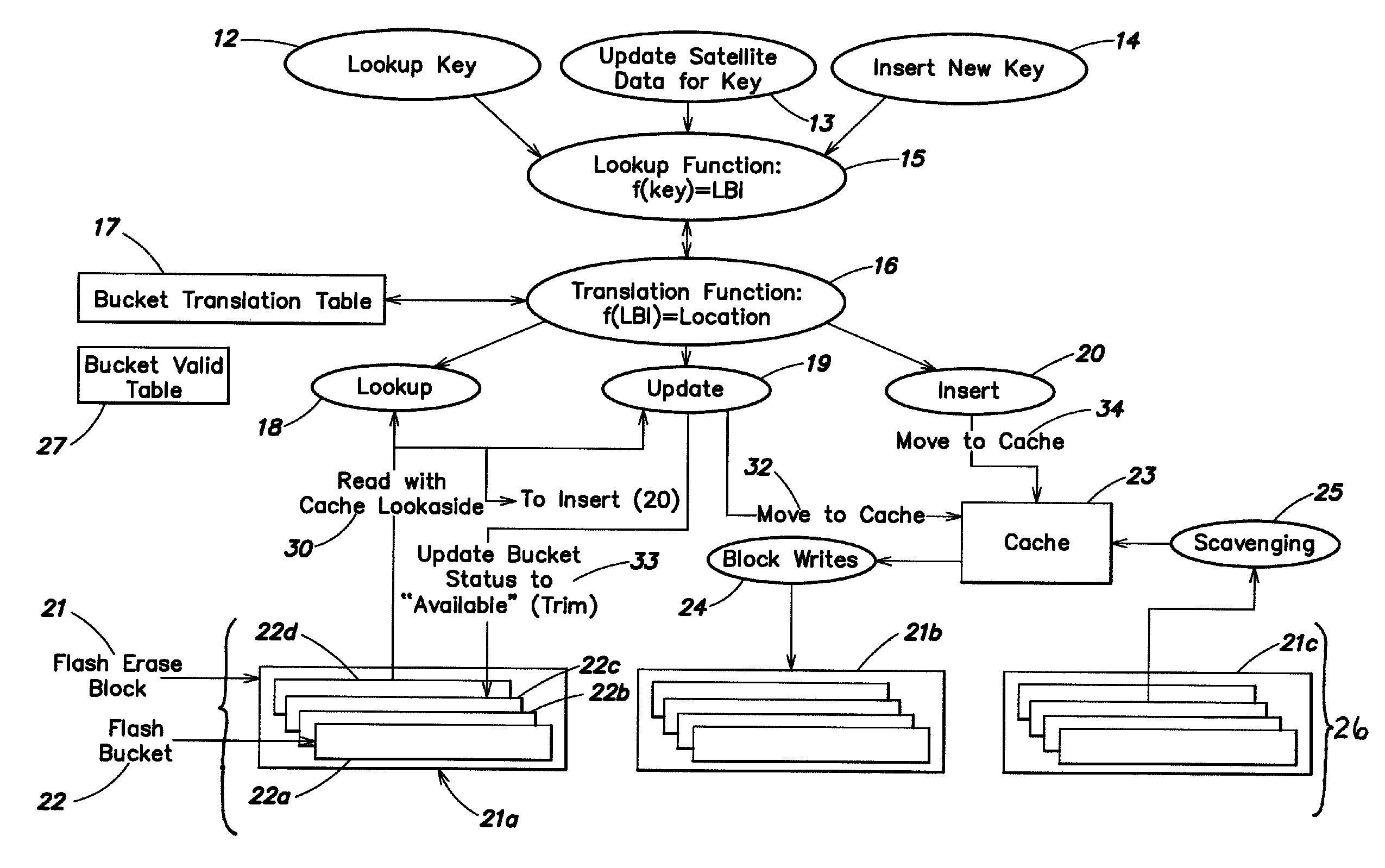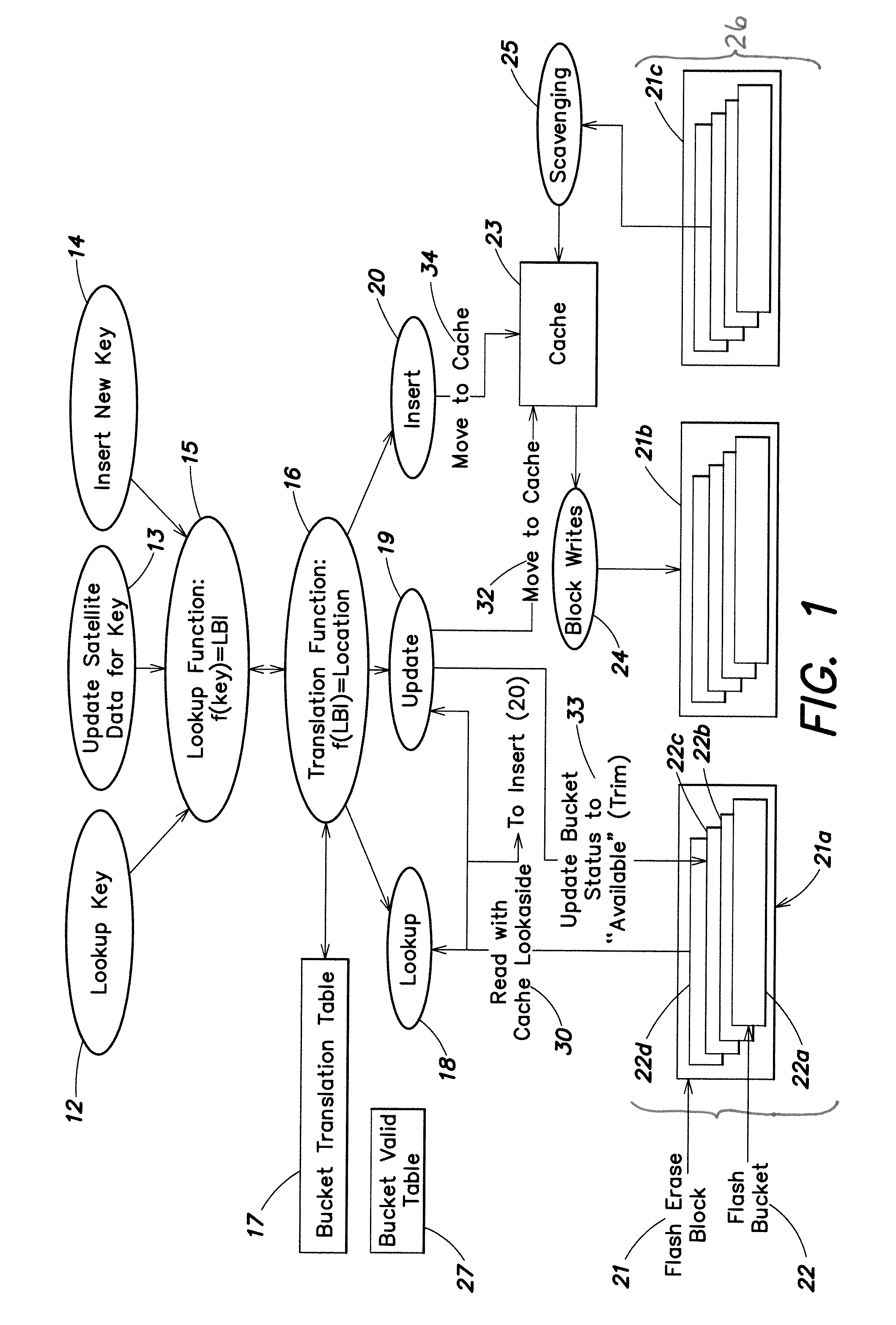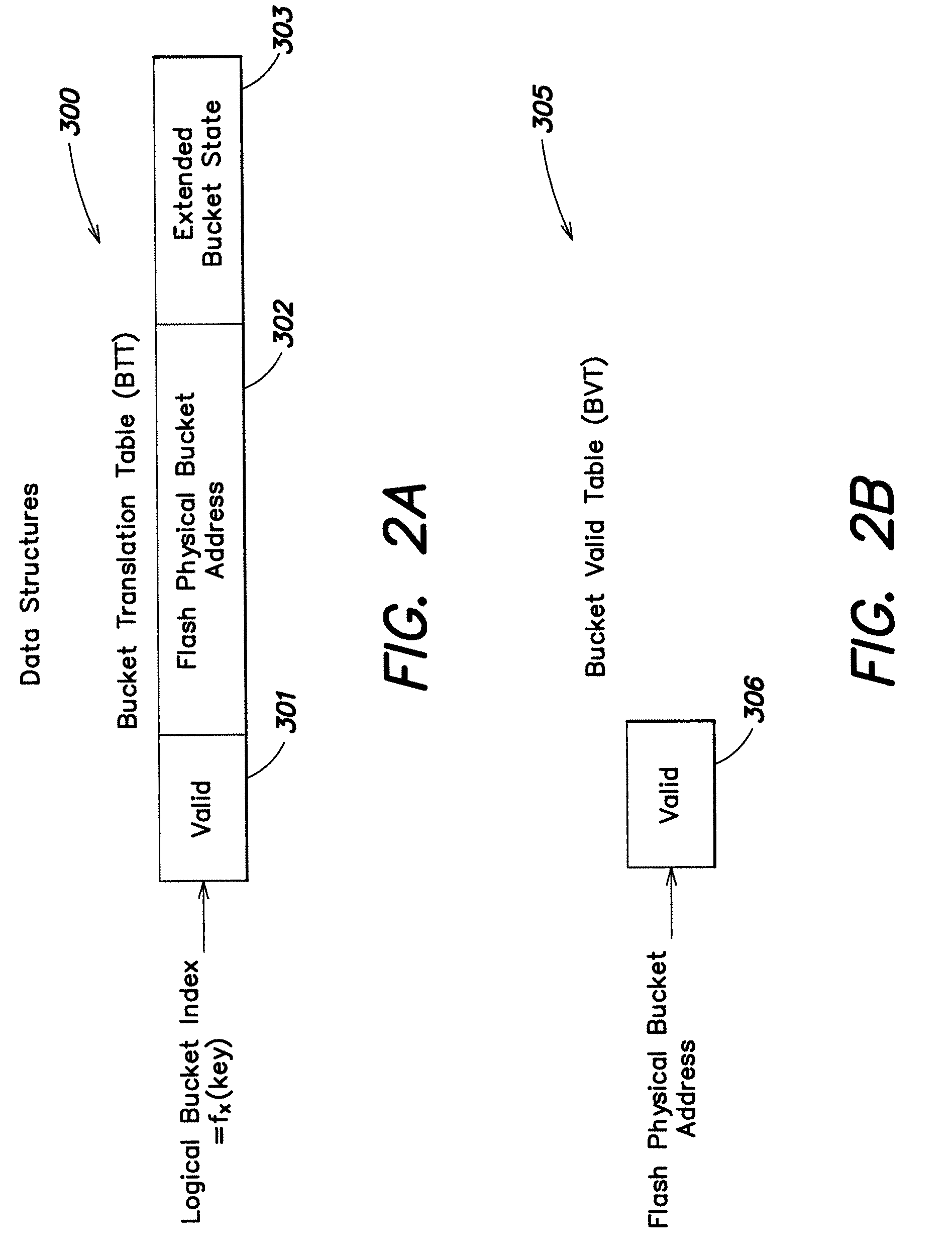Method of adapting a uniform access indexing process to a non-uniform access memory, and computer system
a technology of non-uniform access memory and indexing process, applied in the field of index construction, can solve the problems of not being able to meet the cost effective current memory technology, not being able and being unable to achieve the necessary performance and capacity levels using dram memory technology or disk technology alon
- Summary
- Abstract
- Description
- Claims
- Application Information
AI Technical Summary
Benefits of technology
Problems solved by technology
Method used
Image
Examples
Embodiment Construction
A. Overview
[0063]According to one or more embodiments of the invention, specialized memory technology and algorithms are used to build indices that simultaneously have large numbers of records and transaction requirements. One embodiment utilizes a displacement hashing indexing algorithm, for example cuckoo hashing. The invention enables use of non-uniform access memory technologies such as flash, phase-change and solid state disk (SSD) memory devices.
[0064]In various embodiments of the invention, new data structures and methods are provided to insure that an indexing algorithm performs in a way that is natural (efficient) to the algorithm, while the memory device sees IO (input / output) patterns that are efficient for the memory device.
[0065]One data structure, an indirection table, is created that maps logical buckets as viewed by the indexing algorithm to physical buckets on the memory device. This mapping is such that write performance to non-uniform access memory devices is enha...
PUM
 Login to View More
Login to View More Abstract
Description
Claims
Application Information
 Login to View More
Login to View More - R&D
- Intellectual Property
- Life Sciences
- Materials
- Tech Scout
- Unparalleled Data Quality
- Higher Quality Content
- 60% Fewer Hallucinations
Browse by: Latest US Patents, China's latest patents, Technical Efficacy Thesaurus, Application Domain, Technology Topic, Popular Technical Reports.
© 2025 PatSnap. All rights reserved.Legal|Privacy policy|Modern Slavery Act Transparency Statement|Sitemap|About US| Contact US: help@patsnap.com



